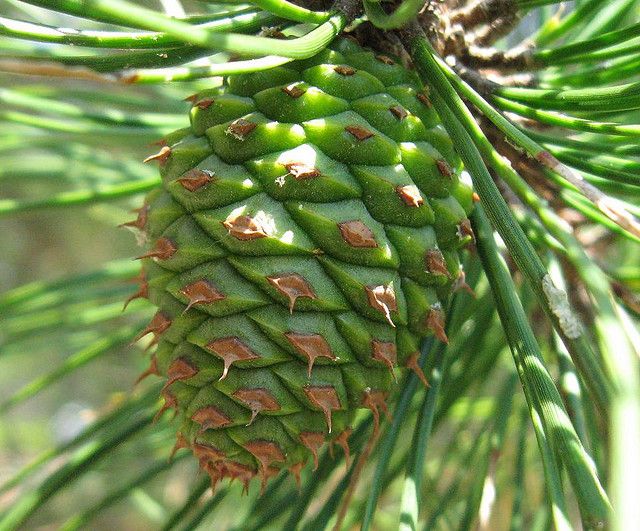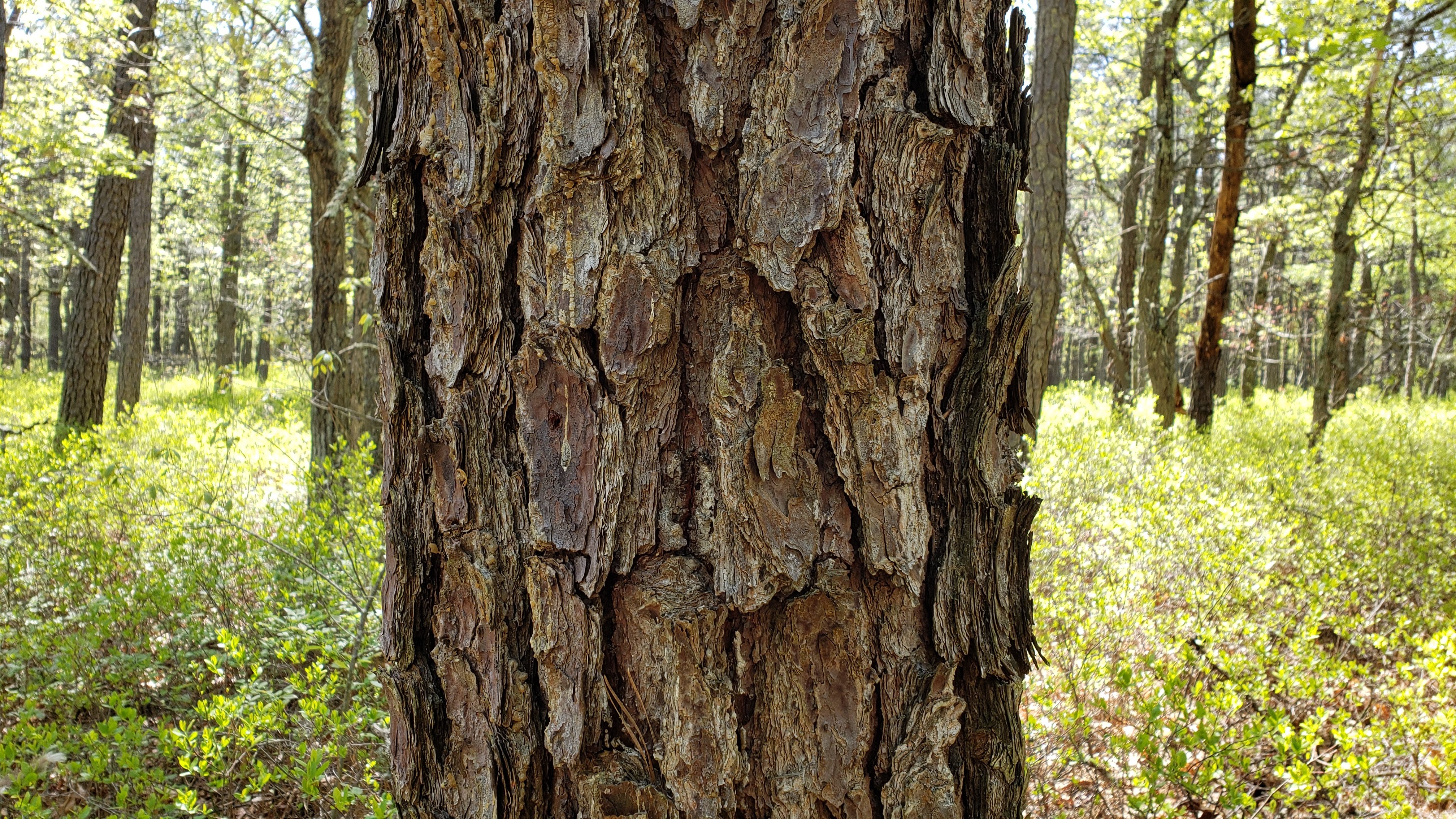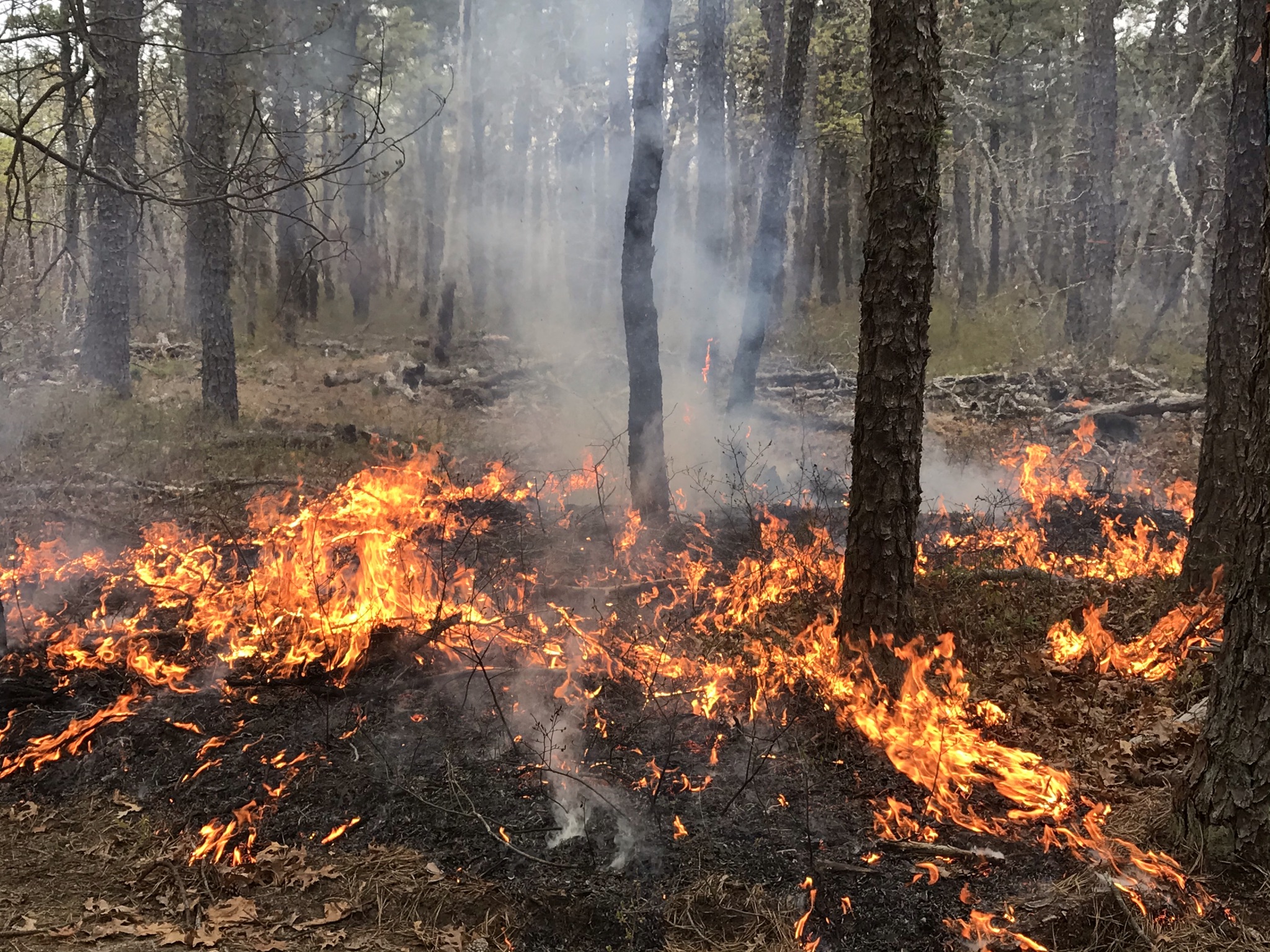The Long Island Pine Barrens is a fire-dependent ecosystem, meaning that the health of the ecosystem depends on consistent wildfire. Many of the plants and animals of the Pine Barrens have evolved unique adaptions to the historical presence of wildfire. Years ago, when Long Island was largely undeveloped, wildfires would start frequently, usually due to natural causes like lightning strikes. Large swaths of the Pine Barrens would burn often, leaving the plants and animals to adapt and consequently rely on fire.
Unique Adaptions
The dominant tree in the Pine Barrens, the Pitch Pine (Pinus rigida) has several unique adaptions to fire, including its thick armor-like bark and serotinous pine cones. This type of pine cone is covered in a thick resin that must be melted in order for the cone to open and release its seeds. The Pitch Pine’s thick bark protects the tree’s inner sensitive material from wildfire.

Serotinous pine cone on a Pitch Pine tree

Thick armor-like bark of a Pitch Pine tree
Other plants, like the Heath family of plants that are commonly found in the Pine Barrens (blueberry, huckleberry, laurel, etc.) have underground rhizomes. Rhizomes are an underground lateral stem. So the plant material above the soil may burn, but after the fire, they are able to re-sprout from their rhizomes.

One endangered animal species that calls the Pine Barrens home, the Coastal Buckmoth, has also adapted to frequent wildfire. In the hottest months of Summer, when wildfires were common, the Buckmoth larvae will crawl under the soil and remain dormant until the cooler months of Fall.
Without the presence of fire, many of the native species of the Pine Barrens fail to thrive.
The Problems with Fire Suppression
As Long Island became increasingly developed, the practice of fire suppression became heavily utilized in order to protect homes and property, curbing many of the natural wildfires that once took place. This has caused the Pine Barrens to remain largely fire-suppressed, creating an actual greater wildfire risk and compromising ecosystem health. Without fire, combustible fuel loads build up– the leaf litter, pine needles, and brush along the forest floor that builds up over time. The greater the fuel load, the larger, more dangerous and quick-spreading any potential wildfire could be. Without proper fire management, Long Island runs the risk of having another uncontrolled fire like the 1995 Sunrise Fire, which burned 3,198 acres. It’s important to actively maintain forests by reducing fuel load along the forest floor. In addition, due to fire suppression, many of the species of the Pine Barrens that rely on wildfire are failing to thrive. In some areas, Pitch Pines are being outplaced by harder woods like oaks. Fire is what keeps the “Pine” in “Pine Barrens.”
Prescribed Fire
The solution is for forest managers to apply prescribed fire or a controlled burn. The National Park Service defines this as “lighting a fire in an area after careful planning and under controlled conditions.” A prescription is described as “a set of conditions that considers the safety of the public and fire staff, weather and probability of meeting the burn objectives.”
However, not nearly enough prescribed burning has taken place in the Long Island Pine Barrens and there are several reasons why. Specific wind and humidity conditions are required to conduct a controlled burn. Since Long Island is so densely populated, experts must be sure to be able to precisely manage for smoke. Coordination must occur between the several agencies that manage the Pine Barrens and the local fire departments and all staff, volunteers and rangers must receive special wildfire firefighting training. All of this can cause burns to take years to plan.
Hope for the Future
However, Long Island might be headed on the right track. Last month, three acres of the Rocky Point Pine Barrens State Forest were burned. The three acres are part of a 27-acre site marked off by the New York State Department of Environmental Conservation (NYSDEC) as a “Demonstration Forest.” The forest is designed to test the efficacy of different forest management tools, such as thinning and prescribed burns. The first three-acre block was burned on Tuesday, April 20. The April 20th burn was a joint effort between the NYSDEC and the Central Pine Barrens Joint Planning and Policy Commission. You can read all about this prescribed burn and future plans in our upcoming newsletter, “The Pine Barrens Today.” Our latest edition is expected to come out this month – Stay tuned!
By: Katie Muether Brown, Long Island Pine Barrens Society
Cover Photo: Polly Weigand


